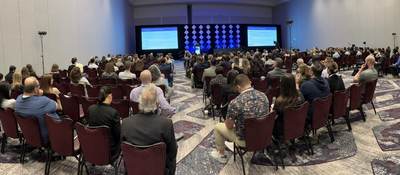May 16, 2023
Over 700 medical device and combination product manufacturer representatives, HFE practitioners, past and present FDA representatives, and HFE students attended the 2023 HFES International Symposium on Human Factors and Ergonomics in Health Care (“Symposium”). Among them was a strong contingent of nine Emergo HFR&D representatives.
Below, we’ve provided a quick overview of our contributions to the Symposium. Contact us to learn more about any of these topics.
Meeting the HFE expectations, regulations, and standards of a global marketplace
Workshop by Michael Wiklund (Life Sciences Practice Leader) and Yvonne Limpens (Managing Human Factors Specialist)
Michael and Yvonne kicked-off this year’s Symposium with a half-day workshop addressing how to apply HFE in a manner that satisfies global and local regulatory expectations. The workshop addressed the requirements of the US, Europe, Brazil, Japan, and China with particular audience interest in the requirements of the United Kingdom, following “Brexit,” and China, following the release of regulatory guidance that includes new HFE requirements. The workshop was well-attended with nearly 50 attendees, including many industry representatives and fellow consultants eager to learn and engage on the topic of applying HFE on a global scale.
Retroactive interference in decay periods: Exploring methods to reduce training decay durations
Poster presentation by Tiffany Yang-Tran (Human Factors Specialist) and Layne Hartman (Senior Human Factors Specialist)
In their poster, Tiffany and Layne poster explored the possibility of reducing training decay periods by supplementing the decay theory model, which assumes that forgetting occurs due to the passage of time, with an interference theory model, which suggests that forgetting is due to other information interfering with our recall. They suggested planning for usability test participants to perform a specific activity, such as being trained on another device with the same indication, between the training and test sessions to interfere with memory recall to reduce the required training decay time, which would, in turn, reduce the logistical complexities of usability tests.
Exploring challenges and opportunities with knowledge tasks and the two-phase approach
Poster presentation by Suruchi Batra (Human Factors Specialist) and Laura Birmingham (Associate Research Director)
Suruchi and Laura’s poster outlined our team’s two-phase knowledge task approach that optimizes the collection of key information and enables effective critical task evaluation. Phase 1 consists of knowledge check questions that generally evaluate participants’ understanding of key use steps and concepts based on existing knowledge, training, and/or available materials. Phase 2, the reading comprehension portion, evaluates the comprehensibility of specific labeling content. We discussed with other HFE professionals how they use similar approaches tailored to their specific requirements, findings definitions, and usability testing processes.
The (buried) treasure of post-market surveillance (PMS) by means of an industry case study
Oral presentation by Yvonne Limpens (Managing Human Factors Specialist) and Michael Rothstein (Senior Human Factors Specialist)
Moving beyond more typical topics related to user research, usability testing, and use-related risk analysis, Yvonne and Michael’s presentation outlined the key benefits of proactively including HFE into PMS and described Outset Medical's HFE PMS journey for their Tablo hemodialysis system. The key takeaway was to embed HFE efforts into existing PMS processes and to apply HFE principles throughout to help align HFE-related activities with PMS personnel’s mental models to increase efficiency and minimize the burden on all involved.
Hello (again) from the other side: Cross-industry trends in FDA feedback from HF consultants
Panel moderated by Allison Strochlic (Research Director – HFR&D) in collaboration with four other HFE consultancy leaders
Allison moderated a panel with four other senior leaders of highly regarded HFE consultancies as they shared the latest trends in FDA feedback. The panel offered a unique opportunity to hear a range of feedback received on various topics and how different consultants interpreted and acted upon that feedback. Panelists emphasized the need to pre-submit HF validation test protocols to FDA for review and include comprehensive justifications for any methodological decisions, such as user group and sample size selection, training approach, and critical task identification.
Participant diversity: Including representative participants critical to product development
Poster presentation by Suruchi Batra (Human Factors Specialist) and Ashley Mitchell (Human Factors Associate) with industry collaborators
This poster described the importance of setting diversity, equity, and inclusion (DE&I) goals while conducting HFE work (e.g., formative studies, HF validation testing) and was developed with industry collaborators. Specifically, the poster addressed considerations to expand DE&I-related efforts and usability test goals that could be applied to other teams to expand the applicability of and range of feedback from usability tests.
Performing comparative user interface and use-related risk analyses to justify CDRH-regulated devices’ safety and effectiveness in lieu of HF validation testing
Poster presentation by Allison Strochlic and Merrick Kossack (Research Directors – HFR&D) with industry collaborators
Allison and Merrick’s poster, developed in collaboration with Outset Medical’s Brittany Lim, described how to perform UI and use-related risk comparisons in lieu of HF validation testing, specifically addressing the needs of medical devices regulated by the FDA’s Center for Devices and Radiological Health (CDRH). The poster included an excerpt of a comparative analysis performed for Outset’s Tablo hemodialysis system and referenced the various guidance documents that reference HFE-related comparative analyses. They emphasized the applicability of this approach to products similar to predicate devices or those with only a minor user interface (UI) change from a previously tested version.
Forgoing Human factors validation testing: When it’s possible and how to justify your case
Oral presentation by Andrea Dwyer (Associate Research Director) and Emilee Stanczyk (Managing Human Factors Specialist)
Andrea and Emilee’s presentation described how to perform HFE analyses to determine when a justification for forgoing HF validation testing is likely to be accepted, or if an HF validation test is necessary, with advice applicable for both medical devices and combination products. They shared the core elements that must be included in a complete justification and additional human factors elements that can strengthen the justification and rounded out the presentation with three diverse case studies that demonstrated building strong justifications.
Request more information from our specialists
Thanks for your interest in our products and services. Let's collect some information so we can connect you with the right person.







